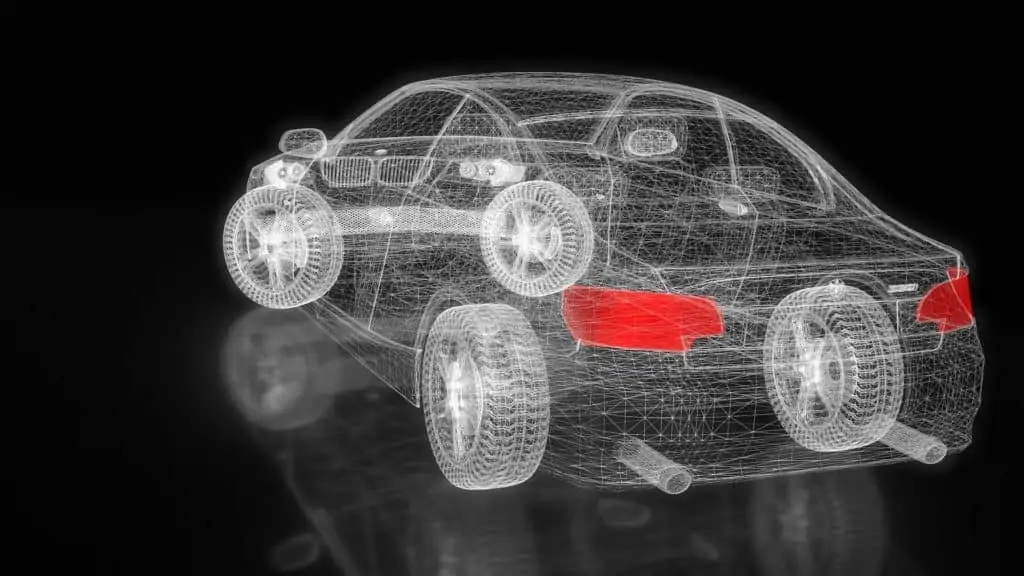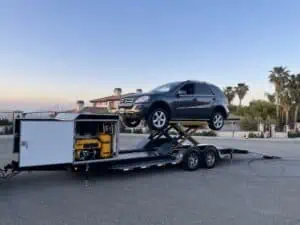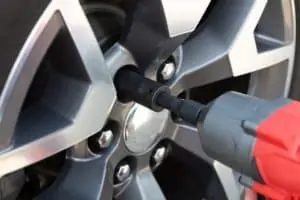If the US Automotive Aftermarket were a country it would rank #31, just ahead of Israel. And, if the Automotive Aftermarket were a global company would have sales nearly equal to Apple or Berkshire Hathaway.
Because of the sheer size of the marketplace, there are many unique channels and sales opportunities. These opportunities come from one of three major segments based upon customer demand cycles. These are:
- Collision Parts Marketplace: Parts used to repair vehicles following a collision event
- Accessories: Parts used to modify a vehicle
- Mechanical Parts: Parts used to repair a vehicle with a mechanical part failure.
Defining the Automotive Aftermarket
The collision, accessory, and mechanical markets each have very different dynamics with different installers, distributors, and manufacturers and need to be presented as unique market segments.
According to AutomotiveAftermarket.org, the total US mechanical/accessory aftermarket is expected to be around $321B marketplace in 2021. Also, according to the Specialty Equipment Manufacturer’s Marketplace (SEMA) around $46.1B accessories. And, according to 3NG Consulting estimates, the total collision parts marketplace to be around $39B. Based upon these data:
- The collision marketplace is around 11% of total Automotive Aftermarket
- Accessories account for around 13% of the total Automotive Aftermarket
- The mechanical parts marketplace accounts for 76% of total Automotive Aftermarket

The Automotive Aftermarket by Channel Level
The size of the Automotive Aftermarket is typically presented at retail price levels, which can create some challenges for some companies when determining sales opportunities and market share. To simplify these measurements, the table below shows the market size at different distribution points.
So, if you are a shop chain, part sales compared to the total are best measured at the retail price level. Similarly, if you are a wholesale distributor and are seeking to measure your market share, it is appropriate to use the “Wholesale Price Level” to determine the total marketplace.

The Collision Aftermarket
The collision marketplace is dominated by automaker parts that account for around 2/3 of the total parts marketplace. And while this market share is impressive, it has been slowly declining from its peak of 92% in 2000.
Understanding automaker market share dominance requires an understanding of the nuances of the collision marketplace which are very different from the mechanical parts marketplace. These differences come mostly from the influence applied by insurance companies. The addition of a new influencer creates a triangle between consumers, shops and insurance companies and causes an unnatural demand process. The ultimate outcomes of this dynamic are:
- Insurance companies stretching legal definitions to permit the use of lower priced parts
- Aftermarket parts manufacturers who are incented to sacrifice quality to a achieve a price point
- A relative inability for shops to use their purchasing power to influence parts quality or price
- A disincentive for shops to purchase alternative parts
- A confusing marketplace for consumers who lack the power to influence vehicle repairs
- A higher than organic use of OEM parts
- A higher than organic use aftermarket and salvage parts with questionable quality
These factors are being exaggerated by ongoing changes to the marketplace including the following:
- Shop consolidation that is reducing the number of shops in the marketplace and increasing the collective power of a few shop chains.
- Software Consolidation The emergence of CCC, who is quickly establishing a dominant position in the collision software ecosystem including consumer communication tools, insurance claims management, body shop repair systems and parts ordering systems.
- Repair Complexity Advanced systems break when vehicles are crashed, and these systems need to be restored during a collision repair. This is forcing shops to increase their ability to understand, diagnose, repair, and recalibrate electronic vehicle systems.
The Mechanical Aftermarket
At over 7 times the size of the collision marketplace, the complexity of the mechanical marketplace stems from its size. This complexity is presented in the form of complex sales channels, part categories, specialized repair facilities and customer nuances.
There are many repair and manufacturing segments that thrive within the $282B per year marketplace. And with 276 million vehicles registered in the United States with an average vehicle age of 12.1 years, there are many different customer groups and needs. This creates segmentation at every level of the marketplace including.
- Customer Type (DIY versus DIFM)
- Repair shops
- Distributors
- Jobbers/ retail outlets
- Manufacturers
Automotive Aftermarket by Repair Channel
The repair channel can be separated into 3 major categories – Car Dealerships, DIY Customers, and Independent Installers. Each of these groups of consumers have unique needs and demands which creates unique parts needs and opportunities.
- DIY: Do it Yourselfers are customers who fix their own vehicles. And while this segment has been declining for around 30 years, they still account for over $50B per year in parts purchases.
- Car Dealers: Car dealerships provide brand focused repairs. And while they are focused mostly on newer vehicles, they manage to retain around 37% of vehicles 7 years and newer and account for $29.4B per year in part sales
- Independent Installers: Installers who are not owned by Car Dealerships. These shops service a wide variety of vehicles with multiple specialties.

Independent Installer Categories
Vehicles are complex with differences by manufacturer, vehicle generation and vehicle type and this complexity creates opportunity for specialized shops. Repairer specialization creates specific needs by installer and feeds specialization up the supply chain. Some of the installer groups include:
- Repair Specialists: Some repairs are complex and benefit from going to a specialized repair shop. These repair specialists mostly focus on maintenance, transmission repairs and smog checks/ mandatory inspections.
- General Repair Facilities: General repair facilities will fix any make of vehicle and can perform almost any type repair.
- Brand Specialists: These facilities focus on a specific brand of vehicle or an area of manufacture. Some of these include import specialists, European Specialists and Asian specialists.
Distributor Categories
To meet the needs of specific installer groups, there are multiple types of stores servicing marketplace with a product quality and price point that matches the needs of their specific target customer base.
- Specialty Retailers: Large distributors that are focused on DIY customers. These companies offer brand names and consumer grade parts at a reasonable price. The best known of the specialty retailers are AutoZone and Pep Boys.
- Program Groups: Program groups are large brand name companies that target independent repair shops. Because the shop reputation rests largely on the quality of parts installed, Program Groups tend to offer high quality parts and services targeted to repair shops. These services include fast delivery, quick order response times and generous warranties. The best-known program groups are CARQUEST and NAPA.
- Import Jobbers: Import jobbers focus on import vehicles and import repair specialists. These companies have services aligned with the needs of installers. The best known of the import distributors is WorldPac who also offers an online ordering system.
- Online Retailers: Online Retailers are dedicated aftermarket distributors that sell parts online for shipment nationwide. The best known of these is RockAuto.
- Traditional Jobbers: Traditional jobbers are small retail outlets who sell parts locally to DIY and wholesale customers. These are typically small companies that operate in rural locations.
Accessories Marketplace
Customer demand is what makes the accessory marketplace different than the mechanical and collision markets. This is because accessories are purchased by customers because they want to improve or modify their vehicle in some way, not because they need to replace a failed part.
So, the accessories marketplace is a much more consumer driven market than with parts. And as in any consumer driven marketplace, demand is created by customer desire. So, selling accessories is about understanding customer demands and interests and creating product offerings that will appeal to specific target audiences.
Accessories generally fall into the following groups
- Wheels: Accessory replacement wheels
- Performance Parts: Mechanical parts that increase vehicle horsepower or handling
- Appearance Parts: Parts that are designed to improve vehicle aesthetics
- Truck Accessories: Accessories for accessorizing light trucks and SUVs
Car Dealerships
Car dealerships operate at multiple levels of the supply chain and warrant their own category. Dealerships sell to every channel in the marketplace from wholesale parts, to customer pay service to ecommerce and DIY. In general dealers perform very well in the categories where they focus their energy. Their focus is typically on service repair and selling wholesale collision parts.
However, since dealers service every market, they are uniquely positioned to grow in any segment where they focus their energies. The major customer types they service are:
- Service Drive – Customer Pay and Warranty Sales
- Customer Body – Around 38% of dealers operate an Internal Body Shop
- Wholesale Collision – The sale of wholesale parts to independent body shops.
- Wholesale Mechanical – The sale of mechanical replacement parts to independent repair facilities
- DIY Counter – Over the counter sales to vehicle owners on the service drive
- DIY eCommerce – Online Part Sales
- Internal – Parts sold to refurbish used vehicles and accessorize new cars.
- Dealer to Dealer – Some very large dealerships operate as a secondary warehouse for other dealers in their area and sell a large quantity of parts to nearby dealerships.

Significant Dealer Part Sales Opportunities
Not all sales opportunities are created equal and this is particularly true for the dealership. So, some opportunities such as opening a dealer body shop or expanding the customer counter are not valuable for the dealership. There are 4 areas where large opportunities exist for the dealership can capture large amounts of business with little effort.
Service Drive
Changing inventory policies can help increase parts sales by up to 20%. This is because Service Advisors will not recommend some upsell parts if the parts are not held in inventory. So, one thing Parts Managers should do is to look at the DMS ordering parameters. If the DMS is not set to stock parts with more than 2 inquiries in a month or you are deleting parts from the parts order, you are likely reducing part sales.
Wholesale Collision
Sign up for an ordering system with an OE conquest program and make sure you push your customers to use it. Conquest programs can increase sales by as much as 45% and are generally set to protect your margin. And solutions such as OPSTRAX and Auto PartsBridge have utilities to handle faxed, emailed and/or phoned in orders.
Wholesale Mechanical
Shops wants quality parts, decent margins, and fast delivery. And while this was previously nearly impossible for car dealers to achieve, modern tools and services make it achievable. Take a look at this article by 3NG Consulting for more information.
eCommerce
Parts ecommerce is a large and growing sales channel. At $18B per year and growing, this is a segment that car dealers cannot ignore, and with dealers accounting less than 6% of the total market, there’s plenty of opportunity to go around. The good news is there are excellent turnkey solutions available in the US market that can get a dealer online in as quickly as 2 weeks. The provider that supports the most factory programs in the market is SimplePart.






